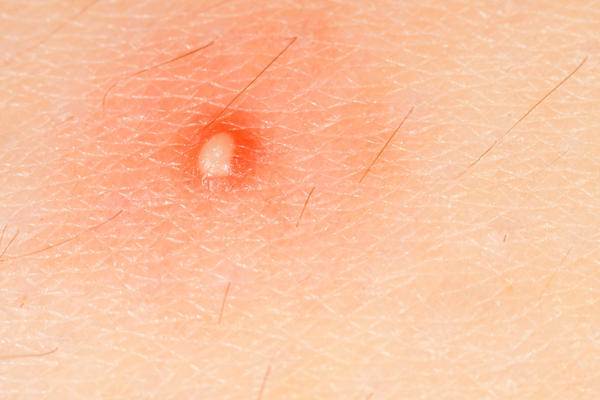Dermatofibroma: Causes, Symptoms, Risk Factors, and Home Remedies

Dermatofibromas are the benign (non-cancerous) skin growths that develop on the lower legs. Dermatofibroma is more common in the women than men. This article discusses the common causes, signs, symptoms, removal and home remedies for dermatofibroma.
What Is Dermatofibroma? How Does it Look?
Dermatofibroma, also known as histiocytoma, is an overgrowth of the fibrous tissue of dermis, which is one of the several layers of the skin (1).
It is a small skin tumor that can occur anywhere on the body, but most commonly found on the exposed body parts like arms and legs. Dermatofibroma is quite harmless, and it never turns into cancer. Some people can have more than one growth on the body. These are found mostly in adults, and it’s rare in children.
Dermatofibromas are round and have pink, brown, gray or red color. They feel like the hard bump under the skin and can sometimes become itchy, though not painful (2).
What Causes Dermatofibroma?
The underlying causes of dermatofibroma are unknown. Dermatofibroma can be a reaction to minor trauma to the skin such as insect bites, splinter or injury.
Dermatofibroma Signs and Symptoms
Unlike the other types of lumps on your body, the development of dermatofibromas is quite slow. Following are the signs and symptoms of dermatofibroma:
- Location is usually on the lower legs, upper arms, or upper back
- They can appear on the trunk of the body or other parts
- Color could be either pink, gray, red, or brown
- They have the ability to change color over the years
- The size of the bump ranges from 0.5 cm to 1.5 cm in diameter
- Skin dimples when the lesion is pinched
- They are painless but might be itchy or tender
- Individuals may have between 1-15 lesions
- These growths are firm nodules
- They are attached to the skin surface
- These lesions are moveable along the subcutaneous tissue
Is Dermatofibroma Dangerous?
Dermatofibroma is not dangerous. These are benign growths of the fibrous skin tissues. The only symptom that shows seriousness is itchiness.
Irritation on the growths can happen as a result of friction from clothing. These are also not a sign or beginning of skin cancer. However, you can get them removed if you want to.
Who Is At Risk?
There are various factors for risk in certain individuals. Here are the risk factors (3).
- Most cases are adults women, but the signs can also be found in the younger men and women
- Insect bites or cuts may increase a person’s chances
- More common in individuals with immunosuppression
Dermatofibroma Removal: How to Remove the Dermatofibromas?
Dermatofibroma does not necessarily require any treatment. However, there are quite a few options if you want them removed or treated. Following are the surgical and medical techniques available to get rid of dermatofibromas.
1. Medical Care
During this procedure, a steroid injection is administered to the site to decrease the growth of the lesion. These injections also reduce itchiness and pain.
2. Surgical Care
There are a few surgical removal procedures for these skin growths as below:
- Excision Biopsy
This type of surgery involves an excision of the entire skin growth, including the underlying layer called the subcutaneous tissue. Excision biopsy is opted to reduce scar formation.
- Shaving
It is a cosmetic procedure. The tool involved in shaving of the skin is mostly a surgical knife. This method does not guarantee the complete removal of dermatofibroma. The lesions can reappear as they are not removed from within the skin.
- Cryosurgery
This procedure involves exposing the growth to freezing temperatures. Liquid nitrogen is the main ingredient in this type of surgery. It is used to freeze and remove the growth. The downside of this procedure is the same as shaving. The bump may reappear.
Dermatofibroma Home Treatments
There are options to try at home without considering medical or surgical procedures. These remedies are simple and inexpensive. Here are some home remedy tips:
1. Spirit of Camphor
Apply the spirit of camphor on the affected area, until the skin dries up. Your skin may sting after using the spirit of camphor.
2. Milk of Magnesia
Apply milk of magnesia to the lesion area for 10 minutes. Rinse the area with water.
3. Low-Fat, High-Fiber Diet
Include the fiber-rich, low-fat foods in your daily diet. Whole grains, fruits, and vegetables are the best sources of fiber. Drink low-fat dairy milk, and have more beans, peas, pears, berries and whole-grain bread and cereals. The fresh fruits and vegetables help improve the skin texture.
4. Benzoin Solution
Use Benzoin solution to wash face. Benzoin helps prevent infections due to its antibacterial properties. To make the solution, mix 2-3 drops of benzoin solution in a glass of cold water. Then, wash face with solution.
5. Avoid Exposure to Sun
Avoid overexposure to the sun from 10 AM to 3 PM. UV light may worsen the lesion or trigger malignant cells.
Dermatofibromas tend to change in color and shape over the time. However, you should visit your doctor when you see any changes.
When to Call Your Doctor?
Although these lesions are benign, a doctor visit is advised for a couple of reasons as below:
- To get an accurate diagnosis of a new lesion
- The bump changes color, size, or shape
- The new lesion is black or dark brown
Immediate medical attention is needed if a lesion bleeds, grows quickly, or becomes too painful.
Read Next:
Sharing is caring! Your love and support motivates us!